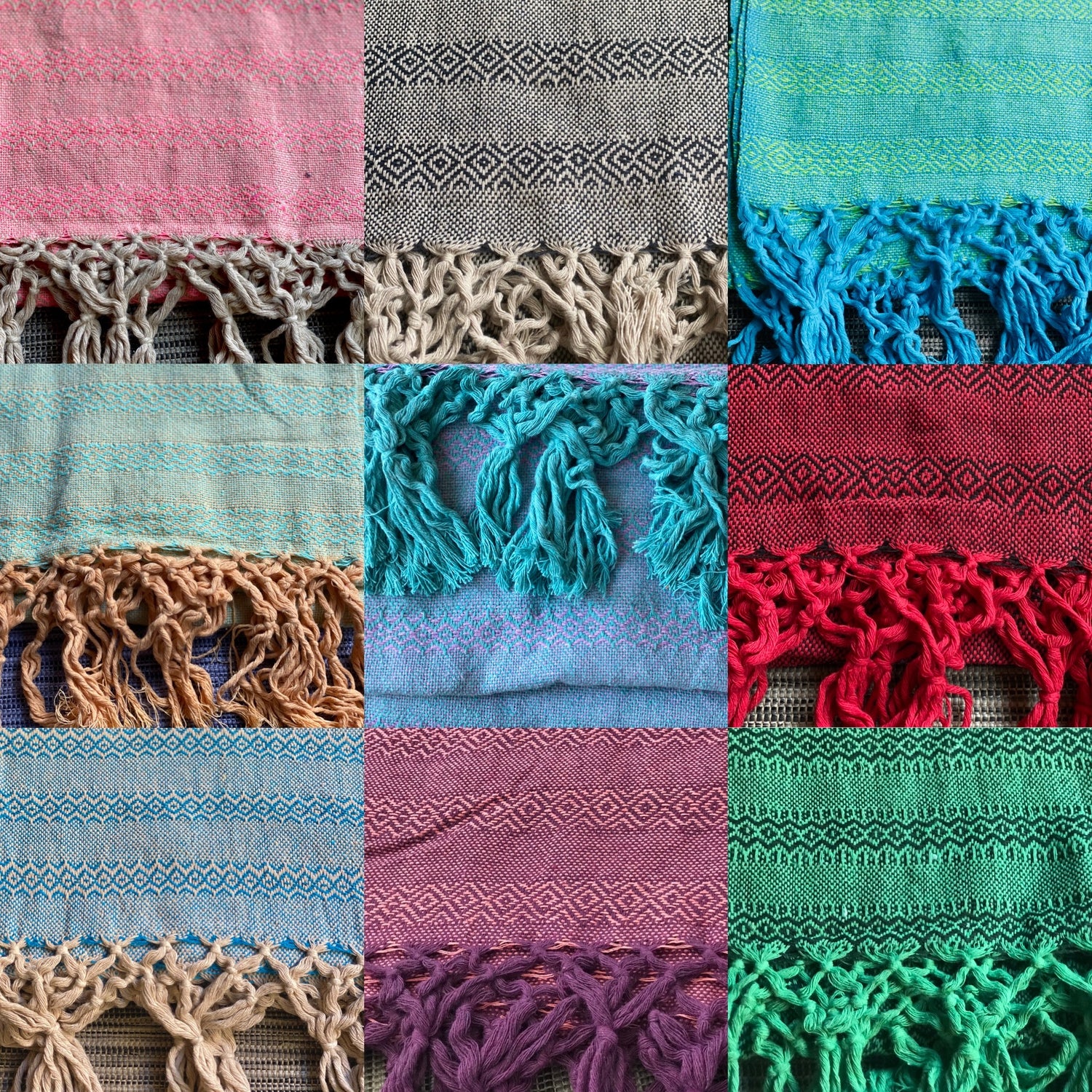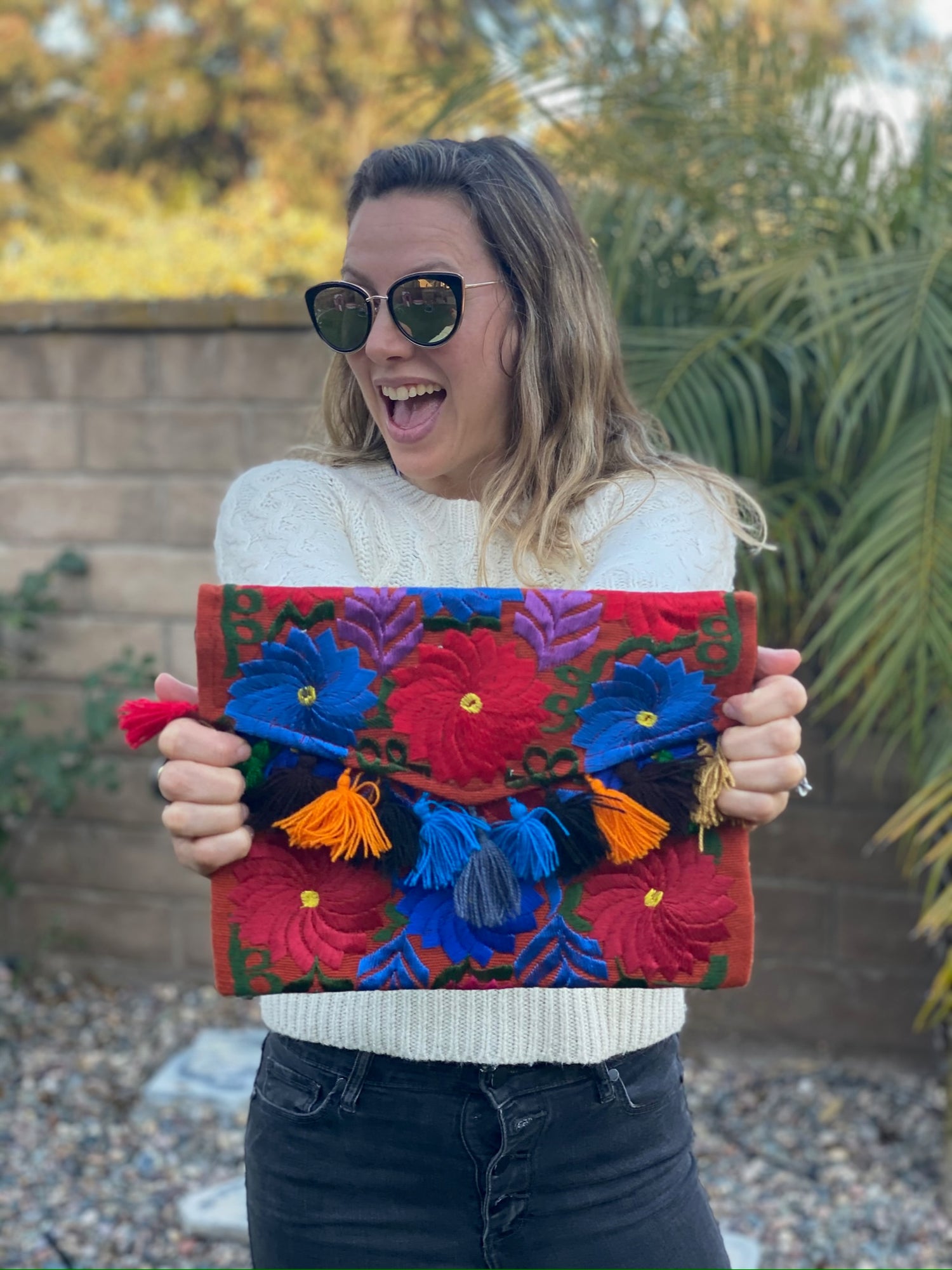Rebozo embroidery is not just an art; it is a deep expression of Mexican culture and identity. These beautiful shawls serve as a canvas that tells stories through their intricate designs and patterns.
By understanding the artistry and techniques behind rebozo embroidery, you can appreciate how each piece reflects the rich traditions of Mexico and the creativity of its artisans.

As you explore this unique textile, you'll find that each stitch is steeped in history, representing generations of craftsmanship. From the materials used to the methods of creation, the process of making a rebozo involves skills passed down through the years.
Engaging with these garments allows you to connect with the cultural heritage that they embody.
The designs on rebozos serve more than just a decorative purpose; they symbolize different aspects of life and community in Mexico. By learning about these designs, you will gain insights into the values, beliefs, and stories that shape Mexican identity and art.
Key Takeaways
- Rebozo embroidery is a significant part of Mexican cultural heritage.
- Each design on a rebozo has its own meaning and history.
- Understanding rebozo artistry enhances your appreciation for Mexican textiles.
Historical and Cultural Context

The rebozo is a rich tapestry of history and tradition, deeply woven into Mexican culture. By exploring its origins, symbolism, and the impact of globalization, you will gain insight into why the rebozo remains an important part of identity and community.
Origins and Evolution of Rebozo
The rebozo traces its origins to Mesoamerican cultures, where indigenous women used simple woven fabrics. Over time, this textile evolved through influences from Spanish colonization.
The blending of techniques and styles gave rise to intricate designs that reflect both indigenous and European heritage.
During the colonial period, the rebozo became a status symbol for women in various classes. It was not just a shawl but a statement of identity and culture. Today, the rebozo continues to evolve, with artisans using modern techniques while preserving ancient methods.
Symbolism and Cultural Significance
The rebozo carries profound symbolism in Mexican culture. It represents femininity and is often associated with motherhood and protection.
Traditionally worn by women, it has become a symbol of pride and cultural heritage.
In communities across Mexico, the rebozo is used in significant life events, such as weddings and ceremonies. It serves as a cultural link to ancestors and a means of expressing identity. The patterns and colors convey messages about community and personal stories, making each piece unique.
Impact of Globalization on Tradition
Globalization has brought both challenges and opportunities to the art of rebozo making. While traditional techniques face pressure from mass production, they also gain international recognition.
Designers now blend contemporary styles with traditional motifs, appealing to a global audience.
Artisans are adapting to new markets while staying true to their roots. This balance allows them to maintain cultural significance while embracing change. As rebozos capture the interest of global consumers, they foster appreciation for Mexican heritage and craftsmanship.
Artistry and Techniques of Rebozo Embroidery

Rebozo embroidery showcases a blend of traditional craftsmanship and artistic expression. You will explore the materials used, the significance of design motifs, and how the craft evolves into art.
Weaving and Fabric Materials
Rebozos are often made with natural fibers such as cotton, silk, or wool. These materials provide distinct textures and durability.
The backstrap loom technique is commonly used, allowing for intricate designs to be woven by hand.
Each fabric choice affects the final appearance. For instance, cotton offers breathability, while silk gives a luxurious sheen.
Artisans may also apply the ikat technique, where threads are dyed before weaving, creating stunning patterns. This technique is labor-intensive and highlights the dedication to craftsmanship involved in making each piece.
Design Motifs and Color Significance
Designs in rebozo embroidery often reflect cultural symbolism and nature. Common motifs include geometric patterns, flowers, and representations of animals. These designs communicate stories, beliefs, and the environment.
Colors also hold great meaning. For example, cochineal provides a vibrant red, while indigo produces deep blues.
Artisans choose colors carefully to ensure they are colorfast and retain their vibrant hues over time. The combination of motifs and color not only beautifies the shawl but also connects it to the rich cultural history.
From Craft to Art
Rebozo embroidery elevates crafting to an art form. Renowned artists like Frida Kahlo have worn rebozos, showcasing their beauty in popular culture.
Contemporary designers such as Zandra Rhodes and Ricardo Legorreta often draw inspiration from traditional patterns.
Cultural organizations work to preserve this art form, promoting its significance in museums. Exhibitions frequently highlight the stories behind rebozos and their makers.
The embroidery is no longer just functional; it is celebrated as a unique piece of art that tells a story across generations.
Frequently Asked Questions

This section addresses common inquiries about rebozo embroidery. You will learn about its historical roots, cultural meanings, techniques, and modern influences, as well as the journey for beginners looking to master this art form.
What are the historical origins of rebozo embroidery?
Rebozo embroidery has deep roots in Mexican history, dating back to indigenous cultures. Originally, it served practical purposes such as wrapping and carrying items.
Over the years, it transformed into an artistic expression, reflecting various regional identities.
How do the patterns and symbols in rebozo embroidery represent cultural significance?
The patterns in rebozo embroidery often tell stories or symbolize elements from nature, spirituality, and daily life. Each design can represent specific cultural beliefs or local traditions, making every piece unique to the artisan's community.
What techniques are traditionally used in the creation of rebozo embroidery?
Artisans use techniques like backstitch, satin stitch, and cross-stitch to create detailed designs. They often incorporate vibrant colors, which are derived from natural dyes, adding depth and meaning to the work.
In what regions or communities is rebozo embroidery most commonly practiced?
Rebozo embroidery is primarily practiced in central and southern Mexico. Regions like Tenancingo and San Luis Potosí are particularly known for their distinctive styles and techniques, keeping the tradition alive.
How has modern fashion influenced traditional rebozo embroidery designs?
Modern fashion trends have introduced new colors and patterns to rebozo embroidery. While traditional designs remain, contemporary interpretations bring fresh ideas, appealing to a broader audience and ensuring the art form's relevance today.
Can you describe the process of learning and mastering rebozo embroidery for beginners?
Beginners typically start by learning basic stitches and understanding color combinations.
Practice is essential, and many artisans recommend taking classes or workshops to gain hands-on experience and learn from skilled mentors in the community.




